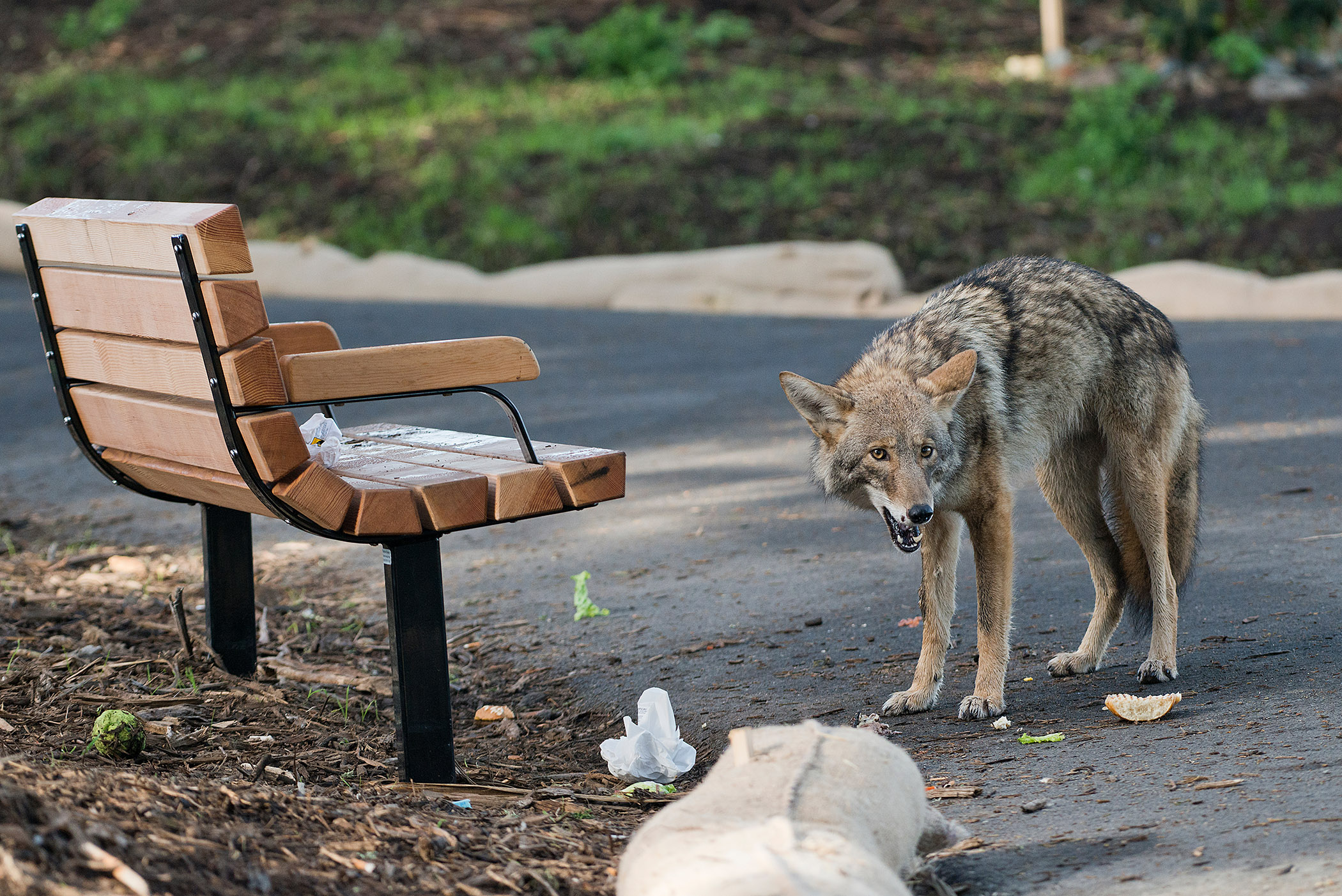Apex is the Peak of Good Living for both man and beast and in this case, the beast is the coyote. Since they are here to stay and in the spirit of knowledge being power, here is your coyote primer.
There are more coyotes in the world today than at any other time. This compelling detail is all the more intriguing when you learn that coyotes are one of the most persecuted animals in history, with unsuccessful attempts to eradicate them pushing beyond 100 years. Falyn Owens is an Extension Wildlife Biologist at the North Carolina Wildlife Resources Commission in Raleigh. She shared these and other details as we discussed this ubiquitous and adaptable mammal.
Owens noted how the coyote can and does thrive in all good habitats—like Apex. They are self-stabilizing animals which means they don’t overpopulate where they live. Over time and as they become well established, they regulate their population by having smaller litters, thus aligning their overall numbers with the ecosystem. They do a good job of keeping pests like mice, rats, and moles in check but also eat squirrels, rabbits, birds, frogs and snakes.
The abridged history of coyotes in America tells us that they were once only found in the Midwest. But, as settlers made their way across the country, landscape changes coupled with the elimination of other, larger predators like cougars and wolves, allowed the coyote to thrive and migrate east. Coyotes started to appear in western North Carolina in the 1980s. Today, coyotes can be found in all 100 NC counties.
They weigh 20–45 pounds (i.e., similar to a mid-sized dog) and have a thick coat that is typically reddish to dark gray. They have long slender snouts, a bushy tail, and pointed ears. And coyotes howl. Though unnerving, their howl serves a purpose. When a family of coyotes is howling, the depth and scope of the sounds suggest a throng of coyotes is nearby. In reality, it’s likely to be no more than six coyotes, including the pups (babies).
Attacks on people, including children, are extremely rare. Normal coyote behavior is to be curious, but wary, when close to humans. Like other wildlife, they will become bold and comfortable if people feed them, either purposely or inadvertently, such as with exposed garbage or outdoor pet food. In addition, unlike the stories we hear each year about raccoons or foxes, coyotes rarely contract rabies.
It is true that coyotes view outdoor cats and small dogs as prey and larger dogs are seen as threats to their territory and their pups. Coyotes are most likely to confront larger dogs during the mating and pup-birthing period which happens between January and June.
Seeing a coyote is nothing to be alarmed about. But, if you see coyotes frequently near your home or in your neighborhood, you and your neighbors should take steps to prevent conflicts. Secure trash and garbage in containers with tight-fitting lids, and it’s best to hold off and not put the trash out the night before. By taking the trash out in the morning, you are less likely to entice coyotes who are natural trash scavengers.
You should never feed or try to pet coyotes. Feeding them breaks down their natural wariness of people and can lead to aggressive behavior. Keep your pets protected by keeping them inside at night, leashed when walking them and/or inside a fenced area. A fence installed around the home is a good idea to protect unsupervised pets.
Feed pets indoors but if feeding them outside is unavoidable, you should remove food and food bowls when your pet is finished eating. Bird feeders and the area around them can attract coyotes since they are attracted to small animals congregating on the ground. If coyotes are seen with any frequency, you should probably remove all feeders.
Close off spaces under sheds and porches. Coyotes, like other wildlife, will use these spaces for resting and raising young. You should trim hedges and cut back brushy edges in your yard to eliminate their sought-after cover. It’s important to not be intimidated by coyotes—keep them at a distance and wary by tossing a small object at them, like a tennis ball. Also, making loud noises (called hazing) or spraying them with a garden hose is recommended. It’s important to establish that they are unwelcome near your home.
Other tips include clearing fallen fruit from around fruit trees—coyotes are omnivores and love to eat fruit. Don’t be shy about educating your neighbors, too. Efforts to prevent coyote conflicts will be less effective if you don’t have everyone on the same page. If you have a problem with a coyote, you can contact a Wildlife Damage Control Agent. These are private individuals who charge for their services. A list is available at ncwildlife.org under Have a Wildlife Problem.
In general, coyotes can be hunted year-round using firearms and archery equipment. A landowner can shoot a coyote that is in the act of causing damage. However—and this is important—you should check to see if local ordinances restrict the discharge of firearms where you live, whether you are within town or city limits, and so forth. For answers to questions, and technical guidance on addressing coyote concerns on your property, you can call (866) 318-2401 or (919) 707-4011.
Coyotes are good at staying out of sight and they understand territory so when they encounter humans, they will quickly conclude that they are infringing on someone else’s territory. In Apex, our territory is their territory, too. The coyote knows where and how it fits in. With a little knowledge, we will, too.
I would be remiss if I didn’t thank Owens for the variety of website links she sent to help in piecing this article together (generously used here, by the way). The North Carolina Wildlife Resources Commission is located at 1751 Varsity Drive, Raleigh, N.C. 27606. Their website can be found at https: www.ncwildlife.org.








